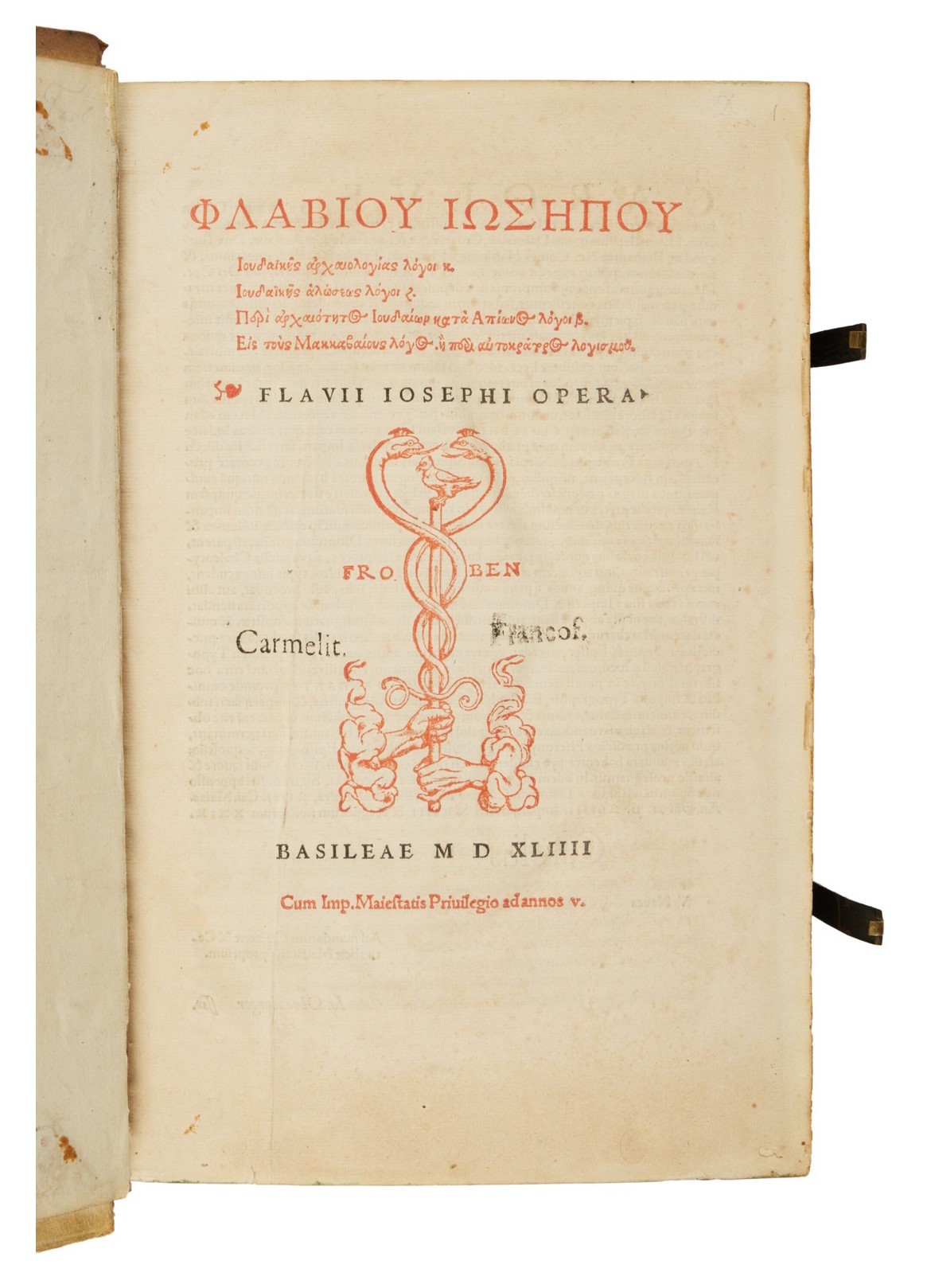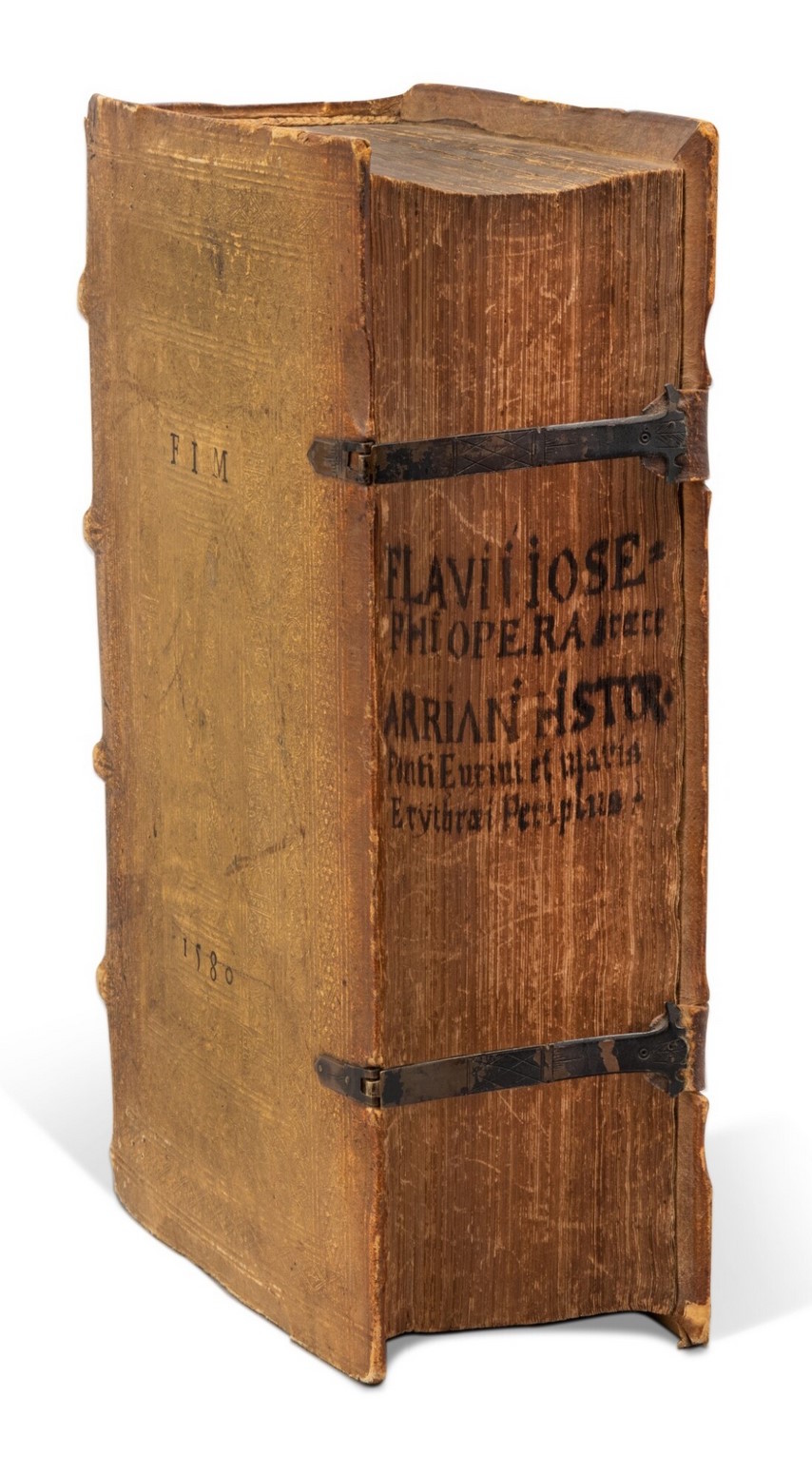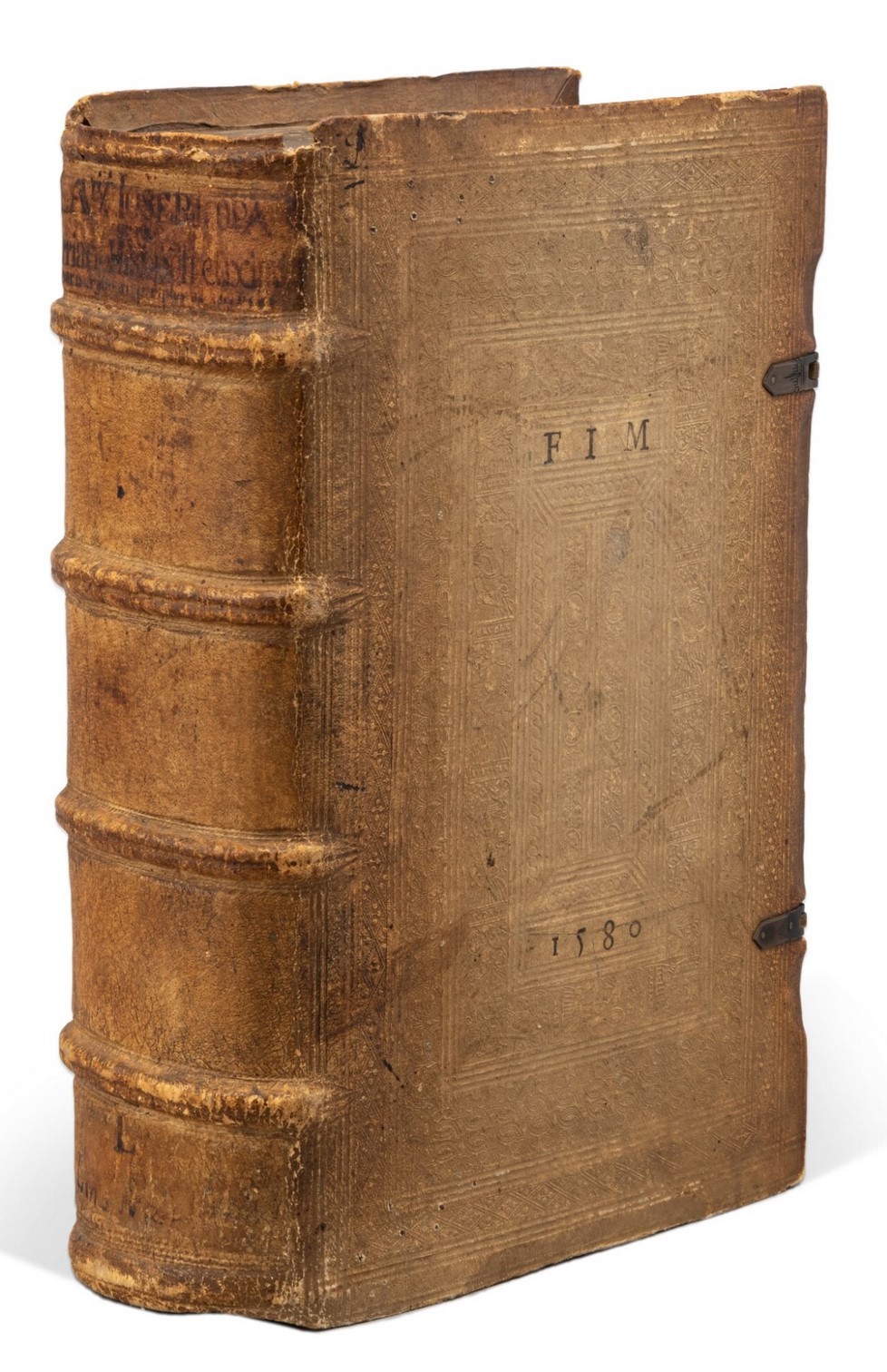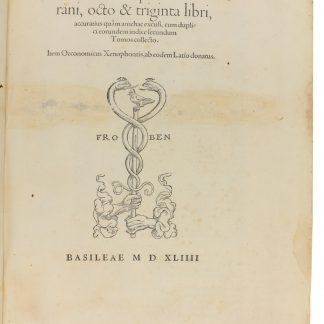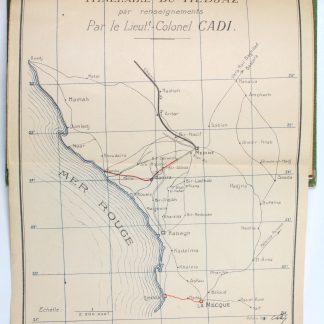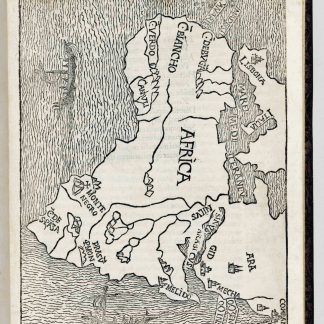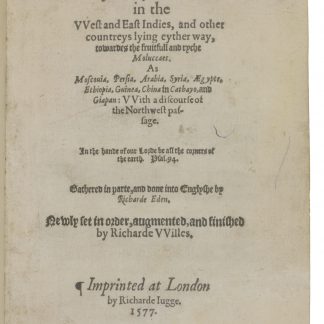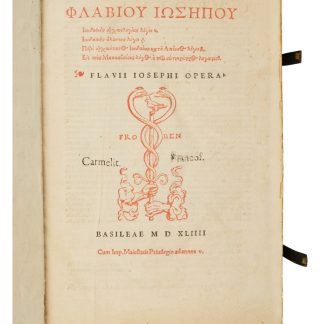In a Renaissance binding: the first printing of Josephus in the original Greek
Opera.
Folio. (12), 967, (1) pp. (Bound with) II: Arrianus, Flavius. Ponti Euxini & Maris Eryrhraei periplus. Geneva, Eustathius Vignon, 1577. (24), 193, (25), (2 blank), (36), 109 (but: 108), (16), (2 blank) pp. With a folding map. Contemporary dated pigskin over blindstamped wooden boards, original brass clasps and catches.
€ 15,000.00
Editio princeps of Josephus's works on Jewish antiquities and the Jewish Wars, an edition that has been called "one of the noblest and most venerable old books I ever saw" (Harwood, as quoted by Dibdin). Bound with another significant work on the classical world: Arrian's account of his circumnavigation of the Red Sea and the Black Sea, containing the earliest map to show separately the immediate region of the latter body of water.
Josephus (ca. 37-100 CE) was born in the Roman province of Judea to Jewish parents, and as a young man was swept up into the Jewish rebellion of 66 CE. Captured by Roman troops, he prophesied that Vespasian would become Emperor of Rome, defected to the Romans, and dedicated his life to recording the history of his people, even as he fought against them in the Second Roman-Jewish War.
This book itself is a wonderfully preserved survival from the famous Renaissance printers of Basel, housed in nearly 450-year-old binding which retains its original brass clasps and beautiful blindstamped scrollwork, including one border showing the Virtues. Its contents are equally important on historical terms: Josephus provides the sole eyewitness account of the Jewish-Roman wars, a snapshot of provincial politics in the Roman Empire, and even an account of the earliest days of what would in time become Christianity. For many events of this period in the Levant, he is the only correlating historical source outside of the New Testament. This early printing, typeset for the first time in the language in which Josephus wrote his histories, stands testament to the influence of his work, even fifteen hundred years later.
1. Unidentified, probably German owner whose initials "FIM" and the binding date 1580 grace the upper board. 2. Title-page bears the early 17th century library stamp of the medieval Carmelite monastery of Frankfurt.
3. Armorial bookplate of William Philp (or Phelp) Perrin (1742-1820) of Bloomsbury Square, a Londoner whose wealth was inherited in Jamaican sugar plantations and who later became high sheriff of Kent.
Folio (237 x 335 mm). Josephus text in Greek, title-page printed in red and black with printer’s device, device on final page. Arrianus in Greek and Latin, two title-pages with printer’s device. With a folding map of the Black Sea, conforming to the Pembroke copy described by Adams, with ¶2 after I6. Contemporary pigskin over wooden boards with bevelled edges, elaborately tooled in blind, including one border of figures of the Virtues (Faith, Hope, Patience, Prudence, Justice), front cover stamped with initials F.I.M. and the year 1580. Titled in contemporary ink on fore-edge, and with original brass clasps and catches present and functional.
Binding slightly toned; a few leaves foxed, two repaired. The map is in excellent condition, unaffected by any browning or foxing.
I: VD 16, J 955. BM-STC German 463. Adams J 351. Hoffmann II, 413. Schweiger 177. Dibdin II, 130. Fürst II, 117. USTC 683976.
II: BM-STC French 31. Adams A 2015. Hoffmann I, 378. Not in Schweiger.
For the binding, see Haebler II, 286, no. 6 (“source unknown”).

